…the more Dale Bordelon stays the same.
AVOYELLES PARISH, LA—Before first light colors the sky over Avoyelles Parish, Dale Bordelon and his 7-year-old grandson, Noah, silently move through the water in a dugout pirogue. The cypress is nearly two hundred years old, hollowed from a single log worn smooth. The only sounds come from the splash of the boat paddle, the tossing of hand carved decoys and the occasional breaking bird. Noah’s hands clutch a cane call, carved and tuned by his grandfather.
For Dale, this early morning ritual is a sacred exercise in stewardship, and family. At the camp the night before, they make a ham sandwich to hold them over. When morning comes, Dale pours a pot of black coffee into a repurposed pickle jar, while grabbing an oil lamp to guide his way to the duck blind. But Dale didn’t invent the wheel. He learned many of these lessons from his mentors, market hunters and most importantly, his father John Bordelon.
In the 50’s during duck season, John would set out long before shooting time, taking a boat down La Vielle Riviere in Mansura. Then, he’d walk a mile through the woods from the bank of the river to his blind, dragging decoys and carrying only his shells and his gun.
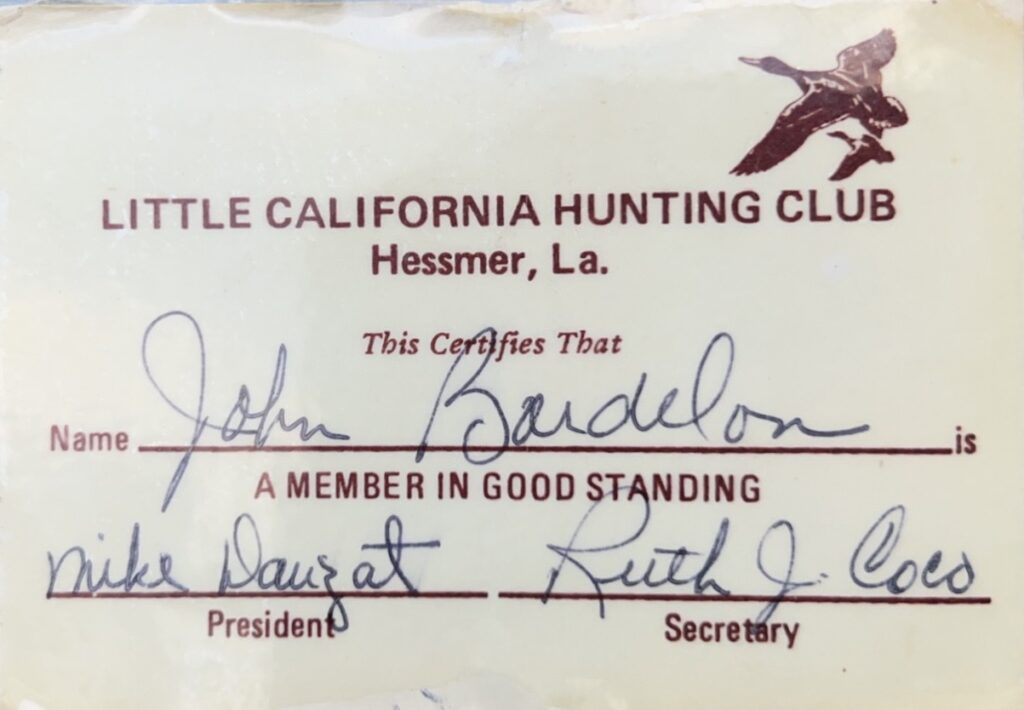
Occasionally, John hunted away from Mansura—a community named for Napoleon’s Egyptian Campaign. When he could, he made hunts in Hessmer at Little California Hunting Club and then at Lake Calebasse, the same property his father and other men ran cattle on in the 30’s. It was great duck hunting then, so much so that years later, John would buy it.
When Dale came of age on that land, life was simpler, and so was hunting. He got his first shotgun in 1970. Men of his generation often went out to the blind on cold mornings with only their fathers’ army coats to keep them warm, paired with khaki pants or a pair of jeans. “When I was in high school, we’d still use those WWII jackets our dad’s had, 30 years after the war. That’s all we knew, and we thought nothing of it.”
Back then, the skies over the “Cajun Crossroads” were alive with hundreds of thousands of ducks, mostly canards français et les printempiere. “In the 70’s, some men in Little California could shoot 300 ducks by 9:30 if they wanted. They were all mallards and pintail.” Dale says. “It was the way things were.”

But time has changed all that. Duck hunting in Louisiana has declined tremendously the last 30 years while each season brings fewer birds. While the causes are numerous, the number of mallards and pintail that once made black skies over communities like Marksville and Hessmer rarely make their way to the southern Mississippi flyway anymore. What remains are mostly canards à ailes bleues—blue winged teal. In Louisiana, they’re also in decline, resulting in only a 9 day teal season for 2025.
But the Beat Goes On
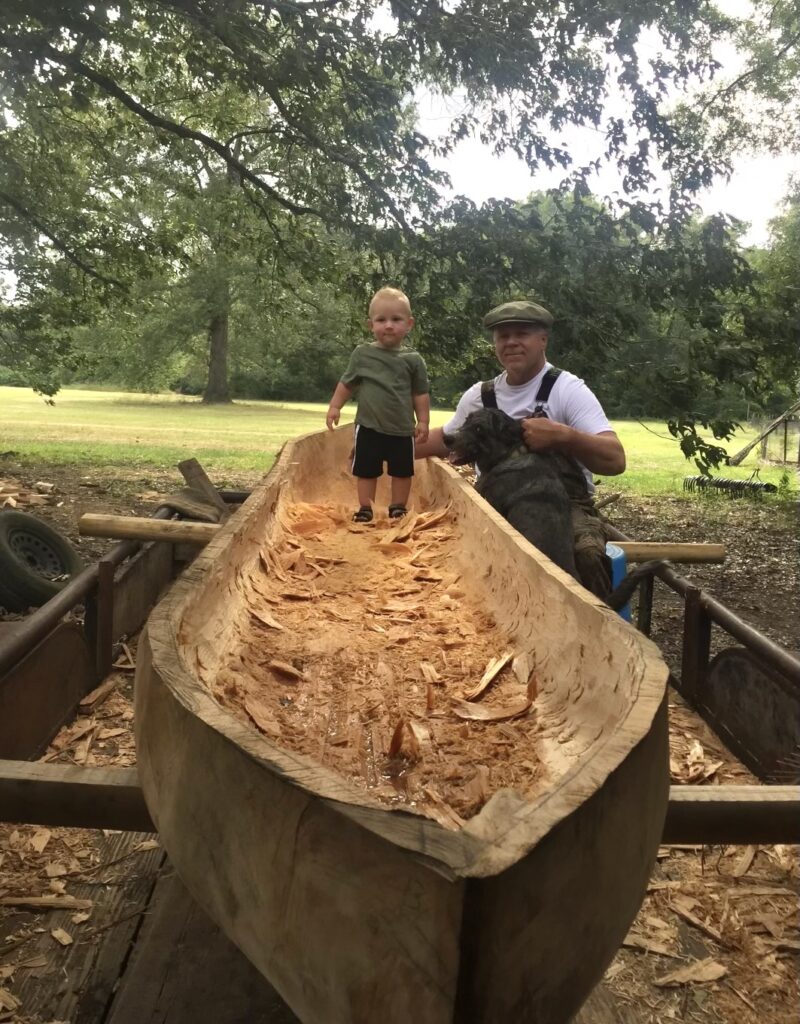
Yet Dale still goes. And more importantly, so does his grandson. Noah is happy enough to just shoot a “water chicken,” and his father, Coty, will gladly share in the meal. “The way it’s going now, in a few years we’ll be in that cypress stump shooting nothing but poule d’eau.” Dale says.“There are people who like to duck hunt, and then there are people who LIKE to duck hunt. The first group? They’ll give up when it gets tough. But the second keeps coming back. Because it’s about something much bigger than shooting ducks.”
That “something bigger” is the heartbeat of Cajun Country: family. It is the passing on of a covenant between man and God’s creation. It is about teaching a young man his identity, and where he comes from. The dugout Dale hunts out of now, he built in 2019. When he carved it out, he counted the rings on the bottom—the tree started growing in 1844. It’ll make for a great keepsake one day, but it’s not all Dale hopes to pass on to his grandson.
To 7 year old Noah Bordelon, hunting in a cypress stump with hand carved decoys, his own cane call, and grandpaw’s guns is all he knows. He doesn’t realize that what’s normal for him, most boys today will never have the opportunity to experience.
After several decades of working at the grain elevator in Bunkie, Dale began crafting duck calls the old way—by hand. For the last 20 years, his “Bayou Beast” calls have gone international, where orders that once just came from Cheneyville now come from Illinois and Italy. Though this success brought the wider world to Dale’s doorstep, it also brought clarity.
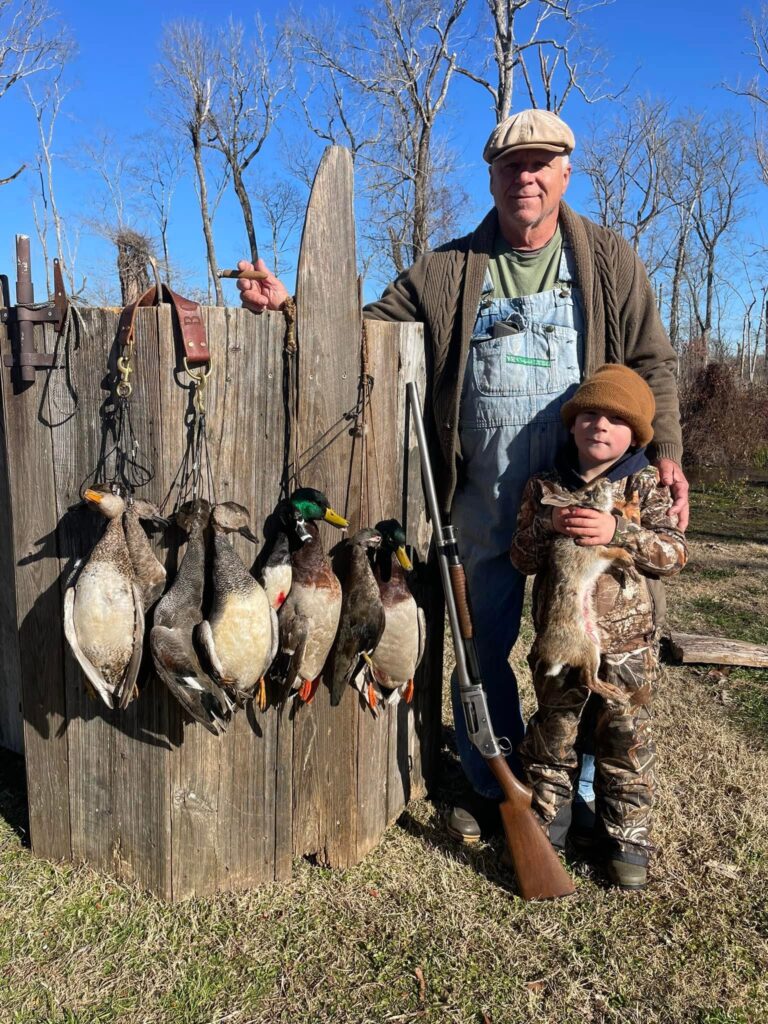
Recently, while guiding a hunt in Mississippi, Dale found himself shooting limits of ducks with men who were strangers to him. When his sons gave word they’d shot their own limit without him, he made an audible remark in the blind without realizing. It was an admission, his heart talking—he was done hunting elsewhere. He wanted to go home.
The modern world of duck hunting filled with commercialization, consumerism and noise is not the one Dale grew up with. Camo clothing lines designed for hunters to impress ducks rather than to conceal themselves from them. Cheap plastic decoys and manufactured calls.
For many, the focus has shifted from family, friendship and the love of sportsmanship to showmanship and the love of social media. It lacks self respect. There are no plastic calls, no heaters on his family property —Dale won’t allow it. The only heater in that cypress stump is coming from the barrel of his 1897 pump shotgun.
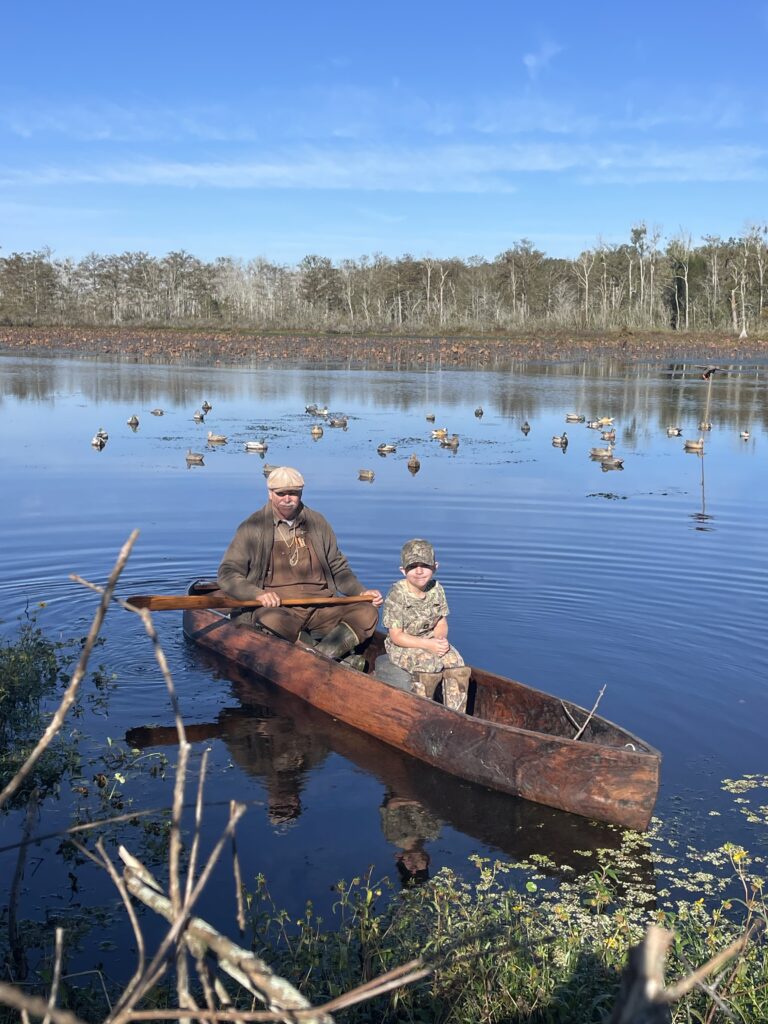
“It’s all noise,” Dale says. “When you’re out there hunting, you don’t need noise. You need silence.” Dale sees himself in Noah—the same curiosity, the same hunger for a deeper connection. “I want him to know this land, these birds, his faith —his culture. So when I’m gone, he can keep this alive.”
The world outside Avoyelles Parish changes fast, but on the water at first light, time slows down. The soft call sounds. And the silence in between yields an unspoken prayer between a grandfather and his grandson, between a man and his Creator.
“Then God said, ‘Let us make man in our image, after our likeness; and let them have dominion over the fish of the sea, and over the birds of the air, and over the cattle, and over all the earth.’” Genesis 1:26
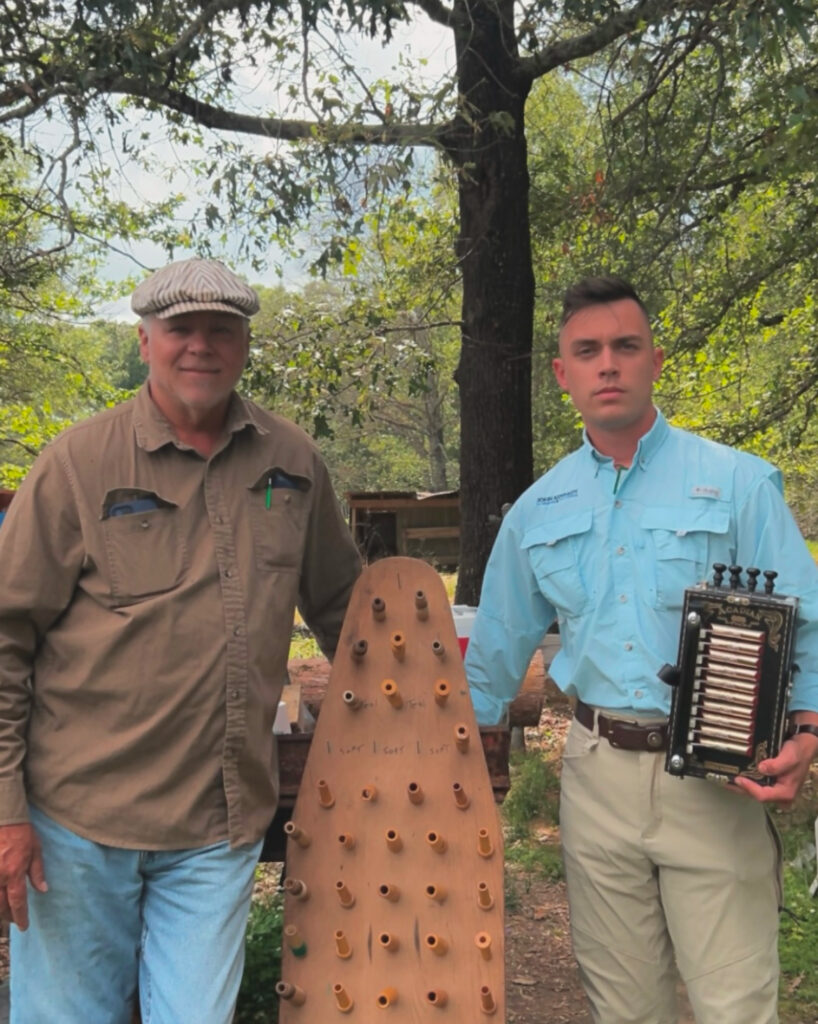
ABOUT THE AUTHOR: Miguel Savoy, right, with Bordelon and hand made calls and accordion, is a 9th-generation Louisianan from Mamou, La. He is a Cajun-French musician, a Marine Corps Veteran and LSU graduate. Savoy has dedicated himself to work in the U.S. Senate, focusing on federal casework in Louisiana, grants, legislative research and waterfowl policy. Savoy is a founding member and president of the Cajun Law Association.
FN 1 Lights Out to Save Migrating Birds – Louisiana Wildlife Federation


